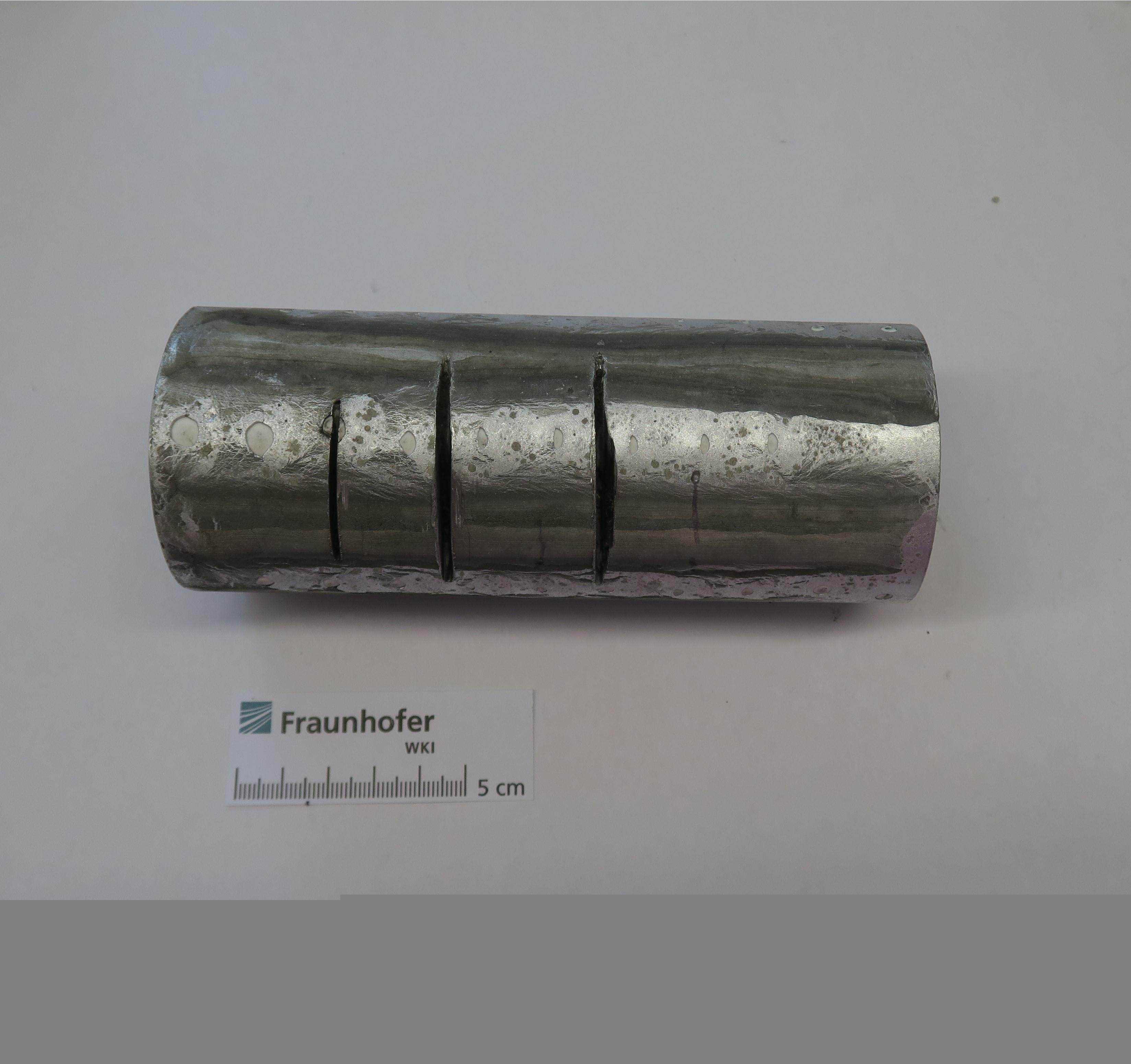
Shells and grapefruits inspire first manufactured non-cuttable material

Engineers have taken their inspiration from shells and grapefruits to create what they say is the first manufactured non-cuttable material.
This new material, which could be used in the security and health and safety industries, can turn back the force of a cutting tool upon itself.
The lightweight material – named Proteus after the shape-changing mythical god – is made of ceramic spheres encased in a cellular aluminium structure that in tests could not be cut by angle grinders, drills or high-pressure water jets.
An international research team, led by Durham University, UK, and Fraunhofer Institute for Machine Tools and Forming Technology IWU in Chemnitz in Germany, got the idea for the new material from the tough cellular skin of the grapefruit and the fracture resistant shells of molluscs.
Abalone sea creatures are built from tiles interlinked with a biopolymer material that make them resistant to fractures.
To resist the most violent forcible entry tools, organic materials such as aragonite tiles – found in mollusc shells – were replaced in the new material with industrial, alumina ceramics and an aluminium, metallic foam matrix.
The new material is strong, light and non-cuttable.
The researchers say, it could be used to make bike locks, lightweight armour and in protective equipment for people who work with cutting tools.
The findings are published in the journal Scientific Reports.
The new material system is dynamic with an evolving internal structure that creates high-speed motion where it interacts with the cutting tools.
The dynamic response is more akin to living structures.
The material is made from a cellular aluminium structure wrapped around ceramic spheres and this has a doubly destructive effect on cutting tools.
When cut with an angle grinder or drill, the vibrations created by the ceramic spheres inside the casing blunt the cutting disc or drill bit.
The interaction between the disc and ceramic sphere creates an interlocking, vibrational connection that resists the cutting tool indefinitely.
The blade is gradually eroded, and eventually rendered ineffective as the force and energy of the disc or the drill is turned back on itself, and it is weakened and destroyed by its own attack.
In addition, the ceramics fragment into fine particles, which fill the cellular structure of the material and harden as the speed of the cutting tool is increased due to interatomic forces between the ceramic grains.
In this way the adaptive nature of the material further repulses any attack.
Water jets were also found to be ineffective because the curved surfaces of the ceramic spheres widen the jet, which substantially reduces its speed and weakens its cutting capacity.
Lead author Dr Stefan Szyniszewski, Assistant Professor of Applied Mechanics, in the Department of Engineering, Durham University, said:
“We were intrigued by how the cellular structure of the grapefruit and the tiled structure of mollusc shells can prevent damage to the fruit or the creatures inside, despite being made of relatively weak organic building blocks.
“These natural structures informed the working principle of our metallic-ceramic material, which is based on dynamic interaction with the applied load, in contrast to passive resistance.
“Essentially cutting our material is like cutting through a jelly filled with nuggets.
“If you get through the jelly you hit the nuggets and the material will vibrate in such a way that it destroys the cutting disc or drill bit.
“The ceramics embedded in this flexible material are also made of very fine particles which stiffen and resist the angle grinder or drill when you’re cutting at speed in the same way that a sandbag would resist and stop a bullet at high speed.
“This material could have lots of useful and exciting applications in the security and safety industries. In fact, we are not aware of any other manufactured non-cuttable material in existence as of now.”
Study co-author Dr Miranda Anderson, Department of Philosophy, University of Stirling said:
“Because the successful resistance of our material system requires it to undergo internal transformations, we chose the name Proteus.
“In 1605, Francis Bacon compared natural materials to Proteus who ‘ever changed shapes’ and he argued that through experimentation we can reveal the metamorphic qualities of materials.”
Dr Szyniszewski added:
“This is what we’ve achieved with this new material and we’re excited by its potential.”
The researchers have a patent pending for their material technology and they hope to work with industry partners so it can be developed into products for the marketplace.
The research was led by Durham University working alongside the Fraunhofer Institute for Machine Tools and Forming Technology IWU, Fraunhofer Institute for Wood Research, Wilhelm-Klauditz-Institut WKI, Hannover and Leibniz University Hannover, Institute of Plastics and Circular Economy IKK, Germany, and the University of Surrey and University of Stirling, UK.
The study was funded by the UK Home Office, the Engineering and Physical Sciences Research Council and a European Commission Career Integration Grant.
By Durham University
514 Views
Recent Posts
- Heliex Power Saves Formaldehyde Producers £500k
- NEPIC spoke with member, Alpek Polyester UK Ltd to learn how they develop their workforce for the future and discover more about their mission to educate on PET
- FEG Global Designs Self-Powering Facility In Ghana
- Thorne & Derrick Electrifying Industry With 3M
- UK MP and chemical engineer Chris McDonald keen to unite the worlds of engineering and politics
Back to News >



